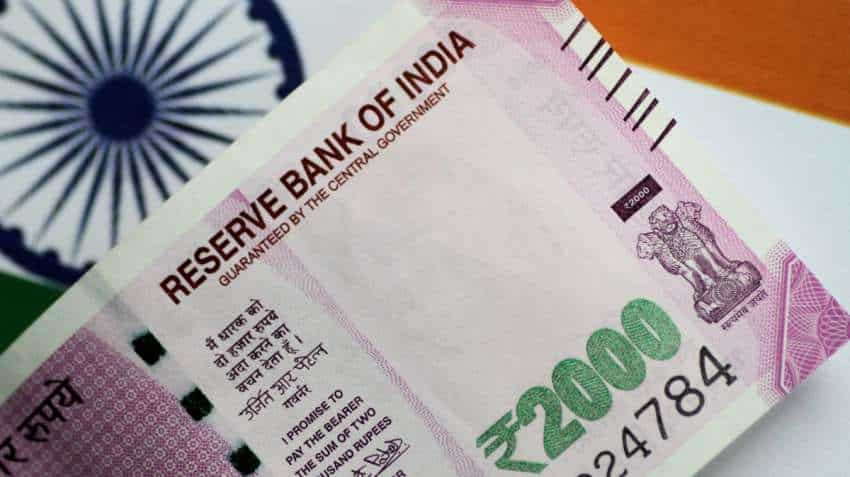Budget 2023 Expectation: Will Modi government hike 80C limit income tax deductions?
Income tax experts say Section 80C is an important tool in the hands of the taxpayer as it helps in inculcating savings as well as in saving taxes.

Budget 2023: Section 80C of the Income Tax Act is one of the most popular avenues for the common man to save money in the form of income tax outgo. Income tax experts say 80C is an important tool in the hands of the taxpayer as it helps in inculcating savings as well as in saving taxes. Now, it's that time of the year when income tax assessees look out closely for any announcement relating to the tax laws in the Finance Minister's annual Budget.
This year round, assessees are once again getting their hopes up for some relaxation in taxes.
First up, what is Section 80C of the Income Tax Act and how does it enable you to save on your income tax outgo?
Section 80C provides deductions on investments or expenditure worth up to Rs 1.5 lakh in a year from taxable income. In other words, it enables the income tax assessee to claim deduction in taxable income on the money spent on certain types of financial products.
For instance, investments in provident fund schemes EPF and PPF, equity-linked savings schemes (ELSS), small savings schemes Sukanya Samriddhi Yojana, Senior Citizen Savings Scheme, National Savings Certificate, unit-linked insurance policies, infra bonds and fixed deposits of five years are some of the popular deductions allowed under Section 80C.
Besides, payments made as premium for life insurance, stamp duty and registration charges for purchase of property or the principal portion of a home loan are also permitted for income tax exemption under Section 80C.
How does it work?
The income tax assessee has to furnish proof of savings in eligible categories totalling up to Rs 1.5 lakh in a year to reduce the amount of income attracting taxes.
But are there any changes likely for the common taxpayer in Budget 2023?
One can expect certain changes in Section 80C deductions in Budget that can benefit the income tax assessee, according to tax experts.
"A hike in the 80C deductions limit will provide savings opportunities to the public at large. It is expected that limit would be enhanced from Rs 1.5 lakh to Rs 2.5 lakh considering the increase in cost of living in the last few years," Dhaval Selwadia, Partner at NA Shah Associates, a chartered accountant firm, told Zeebiz.com.
An increase in the Section 80C deduction limit in Budget 2023 would mean the first in nine years. It was last increased in 2014, by Rs 50,000 to the current Rs 1.5 lakh.
However, 80C deductions are not available to those opting for the new tax regime.
80C is further divided into certain sub-sections explained below:
| Section | Eligible investment |
| 80CCC | Payments made towards pension plans, certain mutual funds |
| 80CCD(1) | Payments made towards National Pension Scheme (NPS), Atal Pension scheme |
| 80CCD(1B) | Payments towards NPS account (up to Rs 50,000 over and above the Rs 1.5 lakh limit) |
| 80CCD(2) | Employer's contribution towards NPS |
In 2020, the government introduced a new tax regime, wherein assessees with taxable income of Rs 5-10 lakh would be taxed at 10-15 per cent instead of 20 per cent on the condition that they would have to give certain deductions including those allowed under Section 80C.
ALSO READ: The difference between new and old income tax regimes
The tax laws should be amended to include the impact of the change made under Section 80CCD in respect of central government contributions up to 14 per cent (in case of government employees), according to Naveen Wadhwa, Deputy General Manager at Taxmann, a tax research and advisory firm.
"Section 80CCD was amended by the Finance Act, 2019 to provide that the central government employees shall be allowed a deduction for the amount deposited in the NPS in respect of contribution made by the employer to the extent of 14 per cent of salary in the previous year. After amendment, maximum admissible deduction in case of an employee would be 14 per cent of the salary, if the contribution is made by the central government or 10 per cent of the salary, if the contribution is made by any other employer," he said.
"Since the contribution of the central government towards NPS has increased from 10 per cent to 14 per cent, the consequential changes should be made in Section 36 to bring harmony between both sections," he said.
Selwadia of NA Shah Associates pointed out that Section 80C is the only section that allows investments as deduction, thus providing a dual benefit to the assessee. "Most income tax assessees are left with no tax-saving ideas after fully utilising the 80C deduction," he said.
Get Latest Business News, Stock Market Updates and Videos; Check your tax outgo through Income Tax Calculator and save money through our Personal Finance coverage. Check Business Breaking News Live on Zee Business Twitter and Facebook. Subscribe on YouTube.
RECOMMENDED STORIES
01:01 PM IST











 Zomato gets Rs 803.4 crore tax demand from GST authorities
Zomato gets Rs 803.4 crore tax demand from GST authorities  Income tax refunds jump 46.3% to Rs 3.04 lakh crore in April-November
Income tax refunds jump 46.3% to Rs 3.04 lakh crore in April-November No proposal on income tax relief for senior citizens under consideration: Centre
No proposal on income tax relief for senior citizens under consideration: Centre  Income tax return filer base up 2.2 times in 10 years, 5 times growth in Rs 50 lakh-plus income category: Sources
Income tax return filer base up 2.2 times in 10 years, 5 times growth in Rs 50 lakh-plus income category: Sources  This is India's only tax-free state, residents earn crores without paying Income Tax
This is India's only tax-free state, residents earn crores without paying Income Tax